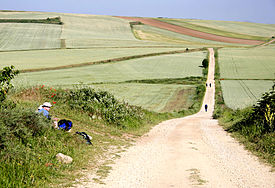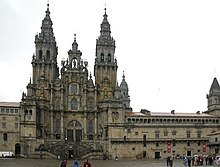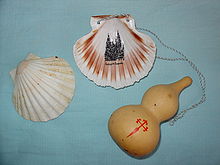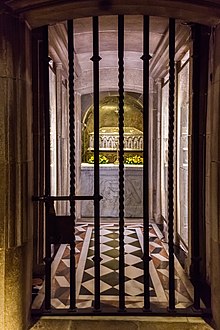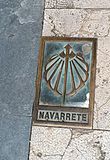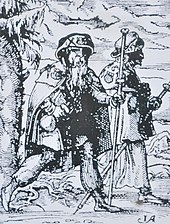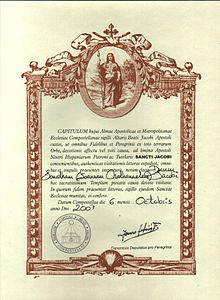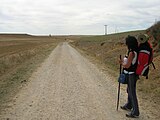Postconservative Evangelicals Greet the Postmodern Age
Roger E. Olson is professor of theology at Bethel College in St. Paul, Minnesota, and editor of Christian Scholar’s Review.
This article appeared in The Christian Century, May 3, 1995, pp. 480-483. Copyright by The Christian Century Foundation; used by permission. Current articles and subscription information can be found at www.christiancentury.org. This article prepared for Religion Online by Ted & Winnie Brock.
SUMMARY
To the post-conservative evangelicals, liberalism and conservatism are both unfruitfully obsessed with “the modern mind.” For post-conservatives, God is not an equal-opportunity savior, but he never leaves himself without a witness in nature and culture. The post-conservatives are critical of their conservative colleagues’ fascination with “epistemological certainty” and “theological systems.”
Are "evangelical" and "theologically conservative" synonymous? Are all evangelical theologians conservative? Most observers--both inside and outside the large and diverse subculture of North American evangelical Christianity--would probably answer yes. Evidence is growing, however, that some theologians who insist on wearing the label "evangelical" (or cannot escape it even when they try) are shedding theological conservatism. A new mood, if not movement, in North American evangelical theology can be described as "postconservative." The best analogy is to "postliberal" theology--the posture of theologians who see themselves moving beyond liberalism while preserving some of its qualities.
Postconservative evangelicals continue to hold to four defining features of evangelicalism (to use the widely cited categories formulated .by David Bebbington): conversionism, or an emphasis on the "new birth" as a life-changing religious experience; biblicism, a reliance on the Bible as ultimate religious authority; activism, a concern for sharing the faith; and crucicen- trism, an emphasis on Christ's atoning work on the cross. But they no longer make their chief role that of defending historic orthodoxy--especially Reformed scholasticism--against the "acids of modernity."
Postconservative evangelical theologians often find themselves more comfortable in the Evangelical Studies Group of the American Academy of Religion (begun around 1980) than in the Evangelical Theological Society. In fact, the former group, which attracts hundreds to its annual meeting, is a primary breeding ground for the new postconservative mood. It tends to regard the older, stodgier ETS as held captive by an old guard of scholars obsessed with baffles over inerrancy, higher criticism and liberal theology in general.
Is postconservatism simply a stage on the way to all-out modernist and liberal theology? Are these mostly younger evangelicals slipping down the slope toward heterodoxy? Many of them would say that the old guard of evangelical theology has itself been slipping down a disastrous slope for at least two decades (since the publication of Harold Lindsell's Battle for the Bible)--back toward fundamentalism. Postconservatives might echo the famous saying of Baptist theologian Bernard Ramm: "Let us remember, brethren, that it is as possible to sin to the right as to the left!"
Postconservatives are convinced that both modernist and fundamentalist slopes are sides of the same cultural Mt.St. Helens--modernity. Like the volcano of the Northwest, modernity is virtually extinct--it's passé. It is no longer a majestic hunting ground for, or a sinister obstacle to, truth. Postconservatives are exploring new cultural landscapes and encountering new opportunities and dangers along the way. To them, both theological liberalism (in all its varieties) and theological conservatism (with as many varieties) were and still are obsessed with "the modern mind." The new landscape is "postmodernity" and has barely been explored.
Postconservative evangelicalism is a small and diverse movement. Its adherents share a few common concerns, not a tight agenda. They are, to begin with, eager to engage in dialogue with nonevangelical theologians, and they seek opportunities to converse with those whom conservative evangelicals would probably consider enemies. At the recent AAR meeting these postconservative evangelicals held a forum with Paul Knitter, a "pluralist" on the subject of other religions, and Jürgen Moltmann, an ecumenical theologian. Both commented informally that they found their evangelica1 conversation partners surprisingly open and the discussion stimulating and challenging.
Other evangelicals are reaching out to nonevangelicals to heal divisions caused by conflicts over modernity--clearly a postconservative move. Messiah College, an evangelical liberal arts institution with roots in the Men- nonite tradition, is sponsoring a project titled "Reforming the Center: Beyond the Two-Party System of American Protestantism." In April, Wheaton College and InterVarsity Press sponsored a conference focusing on interaction between evangelicals and postliberals.
Postconservatives are also concerned with theology's domination by white males and Eurocentrism. While refusing to accept a version of the sociology of knowledge that would lead to doctrinal relativism, the new evangelicals acknowledge the inevitable influence of social location on theologians' endeavors. They seek to add the voices of women, people of color and Third World Christians to the chorus of evangelical scholarship. Here again, the Evangelical Studies Group has led the way by making sure that women and people of color are represented on its steering committee and on most panels. The group will devote a session to evangelicalism and Hispanic theology at its November 1995 meeting.
One voice leading the way into evangelical theology's postconservative, multicultural future is William Dyrness of Fuller Theological Seminary. Dyrness recently edited a volume titled Emerging Voices in Global Christian Theology that includes chapters by leading evangelical thinkers from Eastern Europe, Africa, Asia and Latin America. For the most part, postconservatives heartily embrace the work of Christians for Biblical Equality, and they encourage such feminist thinkers as Elaine Storkey and Mary Stewart Van Leeuwen.
Postconservatives seek to broaden the sources used in theology. Stanley J. Grenz refers to this as "revisioning evangelical theology" (the title of his re- cent programmatic statement of evangelical theological method). According to Grenz and others, the essence of evangelicalism is an experience and a distinctive spirituality centered around it. The experience is an act of God the Spirit known as conversion, and the spirituality is a community-shaped piety of the converted people of God. Theology is second-order reflection on the faith of the converted people of God whose life together is created and shaped by the paradigmatic narrative embodied in scripture. The essence of both Christianity and theology, then, is not propositional truths enshrined in doctrines but a narrative-shaped experience. This is not to demean or demote doctrine. Postconservative evangelicals believe that doctrine matters--but not as an end in itself. Doctrines are the necessary rules that reflect and guide the converted community of God's people.
Theology can never replace experience and doxology. As second-order reflection, it aids experience and doxology. In this servant task, theology draws on several sources, placing them all under the norm of God's narrative-shaped Word in scripture. These sources include the Bible, the tradition of Christian thought (especially from the early church and the Reformation), culture (including philosophy, science and the arts), and the contemporary experience of God's community, including popular religion.
Beneath and behind the postconservatives' approach to theology lies a growing discontent with evangelical theology's traditional ties to what Wheaton historian Mark Noll describes as the "evangelical Enlightenment," especially common-sense realism. Postconservatives see postmodernism as providing more appropriate resources for evangelicalism's philosophical underpinnings. Many of them opt for some version of critical realism, while others, such as Fuller professor Nancey Murphy, turn to philosophers such as Willard Van Orman Quine and Alasdair Maclntyre in developing a new philosophical orientation. A few have begun to explore the potential of postmodern antirealism. But the majority reject ontological relativism as incompatible with the gospel in any culture.
Postconservative evangelical theologians reject a "wooden" approach to scripture, preferring to treat it as Spirit-inspired realistic narrative. In describing his approach to scripture in The Scripture Principle and Tracking the Maze, Clark Pinnock accepts the terms "verbal inspiration" and "inerrancy" as part of a truly evangelical doctrine of scripture, but insists that their meanings must not be determined by traditional scholastic, deductive theology. One significant move made by many postconservatives with regard to scripture is to treat it holistically: it is as a canon that the Bible is inspired, not as bits and pieces of infallible information communicated to individual authors. In its entirety, with the parts viewed interdependently and in terms of the whole, scripture is the church's divinely authored narrative of God's surprising work in creating a community and its thought world.
Postconservative theologians are moving away from classical Christian theism and toward an "open view of God." Not all postconservatives agree with every part of this move--it is a gradual paradigm shift rather than a monolithic move. An open view of God entails seeing God as historical. The God of the biblical narrative is not an unmoved mover, majestic monarch or all-determining controller of history who is untouched by the vagaries of time and change. Rather, God is the self-limiting, vulnerable lover of humanity and the earth who enters into intimate relation with creatures and accepts their pain and suffering into himself.
Postconservatives hold to creatio ex nihilo and to God's omnipotence, omniscience and omnipresence, but reject the notion of untouched transcendence. Theirs is a God who voluntarily and graciously makes room in his reality for creation with its time and space and moves on a journey together with people toward that fulfillment. God is a risk-taker and suffers setbacks along that joumey, but God is also an omnipotent redeemer who knows how to bring good out of evil.
Is postconservative evangelical theology succumbing to process theology? In The Openness of God, Clark Pinnock, Richard Rice, John Sanders, William Hasker and David Basinger insist that the new "free will theism" espoused by many evangelicals differs from process theology on this point: the idea of the self-limitation of God. God is limited not by flaws of character or power but by God's self-emptying relation to creation.
Another common element of postconservative evangelical theology is a new view of nature and grace. Conservatives have traditionally emphasized grace to the detriment of nature. Postconservatives are open to learning from the Eastern Orthodox and Roman Catholic traditions about the dynamic relationship of nature and grace. Nature, though fallen, is never abandoned by grace; grace, though supernatural, pervades nature. Thus, though many postconservatives may still sing "This World Is Not My Home," most would strongly disagree with the song's message. This world of nature is their home for now, and they see themselves as created cocreators with God, caring for creation on the way to its final redemption. Among others, Wesley Granberg-Michaelson and Stephen Bouma-Prediger press for an evangelical theology of nature that encourages ecological activism as a spiritual discipline.
Closely connected to this nature-grace dialectic is the postconservative hope of near-universal salvation. Many postconservatives abandon exclusivism and opt for a new inclusivist view of salvation, believing it is possible for many who never hear the gospel message to be saved. Two theologians who have pioneered in this move are John Sanders and Clark Pinnock. Both imply that all cultures involve enough grace to lead people to a saving relationship with God if they seek it earnestly.
Neither theologian wishes to suggest sheer universalism, and both remain critical of Knitter, John Hick and others who recognize saviors apart from Jesus Christ. Like Hans Küng, they refuse to cross that Rubicon. But unlike conservatives, they go beyond some vague, theoretical wishful thought about a "second chance" or hope for the good heathen who somehow repents. Both express genuine appreciation for the grace of non-Christian cultures and religions founded on belief in the cosmic Christ (John's Logos that lights everyone coming into the world) and the immanent Holy Spirit that strives with humans everywhere. For postconservatives, God may not be an equal-opportunity savior, but he is a caring heavenly parent who never leaves himself without a witness in nature and culture.
Another postconservative shift is in Christology. While resisting the notion that Jesus is the son of God by adoption, not by nature, these theologians often emphasize the humanity of Jesus Christ, and many would say "as this man Jesus is God." In other words, they are willing to rethink traditional incarnational Christology and its categories of substance and person and to reconceive Jesus' divinity in relational terms. Jesus Christ is God's Son, the second person of the Trinity, because of his special relationship of unity with the Father. A dynamic Christology "from below," such as that outlined by Canadian Baptist theologian Russell F. Aldwinckle in More Than Man, is attractive to many postconservatives. While there is little or no consensus as to the future development of Christology, most postconservatives feel free to move away from the language and concepts of Chalcedon while preserving its central intent--to safeguard the full and true humanness and deity of Jesus Christ.
Postconservative evangelicalism is also characterized by a quiet resurgence of synergism with regard to the God-human relationship in salvation. In the past, the Reformed paradigm reigned supreme in conservative evangelical thinking, with various versions of Augustinian-Calvinist thought dominating. Synergism, the notion that human wills work together with God's grace to bring regeneration, was and is still in many quarters suspected of being thinly veiled Pelagianism leading inevitably to theological liberalism. Lead- ing the way in the ranks of postconservatives are new-style Arminians, Wesleyans and revisionist Calvinists strongly influenced by Hendrikus Berkhof rather than Louis Berkhof. No longer is it possible for an evangelical to write or speak as if Reformed theology is synonymous with biblical truth without provoking a withering challenge from representatives of the "Pentecostal paradigm" in evangelical thought.
Finally, postconservative evangelical theology rejects triumphalism. Conservative Protestant theology--especially those elements influenced by fundamentalism--is seen as suffering a kind of hubris with regard to truth-claims. Postconservatives are critical of their conservative colleagues' fasci- nation with "epistemological certainty" and "theological systems." Several evangelical authors have expressed this need for greater modesty, tentativeness and flexibility: Daniel Taylor in The Myth of Certainty, Michael Baumann in Pilgrim Theology and William J. Abraham in The Coming Great Revival: Recovering the Full Evangelical Tradition.
Postconservatives tend to be impatient with exclusive claims to "the correct interpretation" of the Bible or tradition. Yet they are equally impatient with individualistic reveling in ambiguity that results in relativism. Their interest lies in developing open theological systems rather than timeless frameworks of propositional truths. They do not want to ignore the words of the early English Separatist John Robinson: "God always has more light to break forth from his Word!" Sometimes they can be a bit harsh in their struggle to "come out from among" their conservative evangelical forebears in this regard. William Abraham spoke for many postconservatives when, after writing that Carl F. H. Henry's God, Revelation and Authority is "the monument of a generation's work," he added: "Yet given its barren orthodoxy and turgid character, it can at best inspire mediocrity."
Have postconservative evangelicals produced any systematic theology? The best and perhaps only example to date would be Grenz's Theology for the Community of God, an 800-page exploration of Christian doctrine. Clearly intended as an outworking of the kind of "revisioning" of evangelical theology he had called for earlier, Grenz's work proposes "the eschatological community" as the central unifying theme of evangelical theology. This community arises out of the people's faith in God and their common experience of fellowship with the Trinity in conversion, worship and work.
Unlike traditional conservative systems, Theology for the Community of God places the doctrine of scripture within an understanding of the Holy Spirit--and it isn't mentioned until two-thirds of the way into the book. Those looking for discussions of such traditional evangelical concerns as propositional revelation, inerrancy of scripture and conversion-sanctification will not be disappointed, but they may be surprised at where the topics appear and the roles they are given.
In a manner reminiscent of the early 20th-century Baptist theologian E.Y. Mullins, Grenz emphasises experience over supernaturally revealed propositional truth as the heart of Christian theology. He defines theology as reflection on the faith of the people of God --a second-order activity that provides useful models rather than the scientific deduction of intellectual truth from a mother lode of truth in scripture. Yet he clearly regards the biblical message as the norma normans for all Christian faith and practice, and his evangelical commitments are clear in his emphasis on the miracle of conversion.
Postconservative evangelical theology is a movement in its infancy--crawling aand groping toward a new model of evangelical thinking. It probably does not see itself as a movement yet, and only time will tell whether it develops into one. This sympathetic observer would offer this bit of advice:
First, postconsevatives need to be careful not to lose their evangelical cutting edge. If anything and everything becomes in one way or another compatible with the gospel, then the gospel is meaningless. In their newfound acceptance of ambiguity, postconservatives need to hold fast to the core of the gospel, which is the axis of sin and redemption. Evangelicalism is at heart a prophetic form of Christianity that denounces sin and proclaims supernatural restoration.
Second, and closely related, is that postconservatives need to resist forms of postmodernism that involve antirealism. It is one thing to acknowledge the perspectival and paradigm-dependent nature of all human knowing; it is another thing entirely to embrace multiple realities or ontological subjectivism. The latter would involve postconservatives in another form of cultural accommodation--denial of transcendent and objective truth--that can only lead to polytheism.
Third, postconservatives should be very careful not to fall into their own kind of reactionary mentality. There is the temptation in every reform movement to harshly denounce every vestige of the "fathers' faith." Postconservativism need not mean anticonservativism. Respect for even the fundamentalist heritage would be more seemly than snide dismissiveness.






